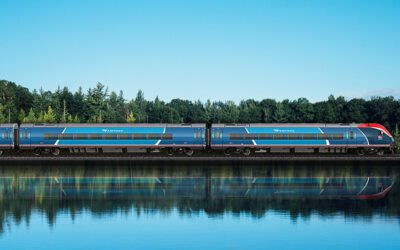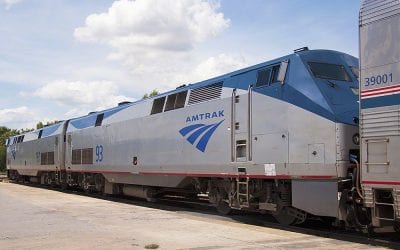Because the United States does not have as expansive a passenger train network as most other industrialized countries (mainly the result of decades of federal policy that treats the travel modes as separate silos with different conditions rather than as part of a unified network), many Americans only consider driving or flying when planning a trip. But for those fortunate enough to have train travel as a viable choice, there are a number of aspects of rail travel that make it preferable to driving or flying.
Sure, train travel doesn’t have the flexibility to go anywhere at any time that the automobile offers. Flying is, of course, faster for longer trips. But, there are many other considerations why train devotees say that riding the rails is travel, while everything else (except for cruise ships) is mere transportation. Here, in the mind of this train partisan, are the top five:
Room to unwind: Train travel is not nearly as cramped as cars or planes. There are no seatbelts and hardly any rules about when you can and cannot stand up and walk around. Luggage allowances are more generous than those of the airlines. Coach seats are wider, have more legroom, and recline further than most airline seats, even in premium cabins. You can go to the restroom any time, and walk between cars to get a bite in the snack car, have a full meal in the dining car, or enjoy the observation car. And, you can even upgrade to your own private bedroom — something you can’t do on most planes or buses. You can also bring aboard your own food and drinks with no restrictions (except that you can’t consume your own alcohol on board, other than in a sleeping car room). Trains are remarkably capacious and versatile, and yet supremely energy and space-efficient vehicles (thanks to the ability of one engine to pull many cars and to the lower rolling resistance of steel on steel compared to rubber on pavement).
More accommodating and easier on the body: You aren’t as likely to get motion sickness on a train, as the vehicle is heavier, the guideway flatter, and the acceleration and deceleration smoother than a road vehicle. While the track may be bumpy at times, there is no turbulence and no fast or sudden starts or stops. Many people find it difficult to read or watch TV or movies in a car or on a plane, but nearly everyone can do so on a train. Plus, the ability to get up and walk around at any time — and to do so without having to stop the vehicle — means you aren’t as likely to suffer cramps or other ill effects of prolonged sitting.
Better views: Trains, whose windows are generally bigger than those of cars and planes, allow you to experience the landscape in a way that’s not possible from a highway or from 30,000-plus feet above. Railroads generally wind along the banks of waterways or on high ridges and can access nooks and crannies where there are no roads. Taking in the scenery in this way inspires the imagination, stimulates creativity, and offers a respite from our busy lives. The only more intimate way to experience places than train travel is on foot or by bicycle.
Easier camaraderie: Hardly anyone talks to each other on a plane or bus, and the car isolates one from one’s fellow travelers (except for any friends or family sharing the ride). There’s something about a train, however, whether it’s the extended journey time, the ability to decompress, or the presence of convivial dining and lounge cars, that invites strangers to open up to one another and generates new friendships. Think train travel as a rolling coffee shop or bar that brings together people from disparate places and walks of life.
Safety: As with airplanes, major railroad wrecks make the news and give people the false impression that train travel is dangerous. In fact, on average, nearly 90 people died and 6,405 were injured every single day in automobile accidents in 2014, while only 5 were killed and 1,409 injured that entire year with train travel (the vast majority of those not due to accidents for which the railroad was responsible). Statistically speaking, you’re better off leaving the driving to the engineer.

I am a writer, researcher, multimedia communications professional, and photo/videographer.
I am focused on achieving sustainable economic development and human-scaled communities through a robust multi-modal transportation system centered around a network of high-performance local, regional, and inter-regional passenger trains and frequent and reliable rail transit (streetcars, light rail, commuter rail and subways/metros).


